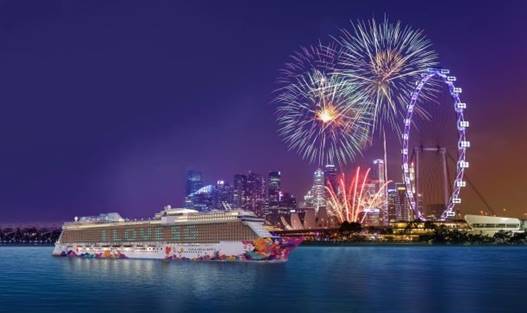SINGAPORE, 8 November 2021: One year after it reintroduced sailings from Singapore, the World Dream cruise ship has welcomed close to 200,000 Singapore residents aboard 150 ‘Super Seacation’ voyages to date, Dream Cruises reported last week.
Bookings for World Dream continue to show a positive trend, as most sailings for the remaining months of 2021 are almost sold out, complemented by strong momentum in the early months of 2022.

“This month is truly special as we celebrate Dream Cruises’ 5th anniversary as a brand and also our one-year milestone of cruise resumption in Singapore. We are deeply appreciative of the continuous support from the Singapore Tourism Board, the local authorities, and the general public, which enabled us to provide Singapore residents with an alternative and safe vacation experience over the past year in these unique circumstances,” said Dream Cruises president Michael Goh.
Breaking new ground World Dream in Singapore also became the first Halal-friendly cruise ship in the Asia Pacific to receive certifications from both the United World Halal Development (UNWHD) and the Global Vegetarian Certification Services (GVCS) in December 2020.
Faced with travel restrictions, World Dream successfully introduced and launched a series of global thematic cruises such as ‘Rhythm of Korea’, ‘Amazing Thailand’, ‘Wonders of Japan’ and most recently, ‘Markets of the World’ in its attempt to bring the various cultures and cuisines of the world onto the ship for guests to enjoy and experience at sea.
In conjunction with the upcoming year-end school holidays, World Dream will present new themes on its sailing, such as ‘A Nordic Christmas Adventure’ special from 17 November 2021 to 1 January 2022.
Cruise demand for World Dream in Singapore has been on the rise from younger travellers, including Millennials and Gen X-ers, as well as couples with no children or families with non-school-going young children. With a wider market demographic, onboard spending on World Dream cruises has increased by 37.5% in 2021 as compared to pre-pandemic in 2019.






